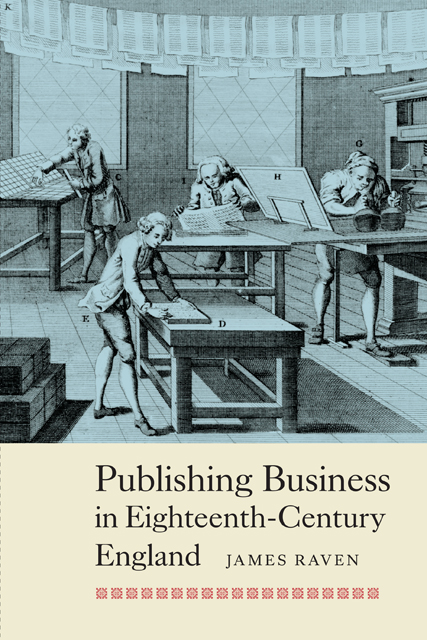Book contents
- Frontmatter
- Dedication
- Contents
- Acknowledgements
- Notes on Dates, Booksellers, Founts and Intaglio
- List of Abbreviations
- 1 The Mediation of the Press
- 2 England and the Uneven Economic Miracle
- 3 The Printed and the Printers
- 4 Serviced by Stationery and Printing
- 5 Printing and the City of London
- 6 Advertising
- 7 The Advertisers
- 8 Intelligence
- 9 Instruction and Guidance
- 10 Wider Discussion
- 11 Business, Publishing and the Gentleman Reader
- Conclusion
- Bibliography of Printed Sources
- Index
- Frontmatter
- Dedication
- Contents
- Acknowledgements
- Notes on Dates, Booksellers, Founts and Intaglio
- List of Abbreviations
- 1 The Mediation of the Press
- 2 England and the Uneven Economic Miracle
- 3 The Printed and the Printers
- 4 Serviced by Stationery and Printing
- 5 Printing and the City of London
- 6 Advertising
- 7 The Advertisers
- 8 Intelligence
- 9 Instruction and Guidance
- 10 Wider Discussion
- 11 Business, Publishing and the Gentleman Reader
- Conclusion
- Bibliography of Printed Sources
- Index
Summary
The surge in advertising copy sent to newspaper proprietors, and the consequent expansion in space allocated to notices and in monies received, are the best testimony to the effectiveness of advertising in the promotion of trade and services. Although claims that over half the population of London was regularly in touch with the content of the newspaper columns1 must be exaggerated, trading patterns were certainly altered by the intervention of newsprint. In London and at port towns, merchants used the newspapers to detail the latest unloaded or expected goods from overseas or from home coastal districts. Manufacturers used newspapers in much the same way, introducing new products and promoting special lines. Regular and relatively cheaply printed advertising, circulating both locally and at great distance, was adopted as a solution to specific problems in underdeveloped and difficult markets. It is clear that many tradesmen were both optimistic and anxious about the effect of newspaper notices, even though it is difficult to gauge either the extent of each investment or the likely returns of individual advertising outlays without knowing the full turnover of the business.
Nevertheless, the widening of newspaper circulation was the key to the expansion plans of hundreds of small manufacturing, finishing, craft and retailing businesses. As early as the second decade of the eighteenth century, promoters were confident of the potential in printed notices carried from London to the provincial market.2 Obviously, profit margins on individual goods had to be sufficient to support investment in expensive advertising. Ordinary foodstuffs were never the subject of retail advertisements in metropolitan newspapers and, increasingly during the century, featured in provincial papers only when a particular market price or levy was fixed. Likewise, it is perfectly true that early London newspaper advertising was dominated by notices for books, pamphlets and patent medicines – all sold and even printed or made up by the printer or agent booksellers and shopkeepers. Most advertisements in Defoe’s Review, for example, were typically restricted to new publications and popular restoratives. These ranged from ‘Rhombi Scoleteini: Or, the Lozenges for Killing Worms’ to the ‘Famous Chymical Secret for the Tooth-Ach’.
- Type
- Chapter
- Information
- Publishing Business in Eighteenth-Century England , pp. 135 - 148Publisher: Boydell & BrewerPrint publication year: 2014



